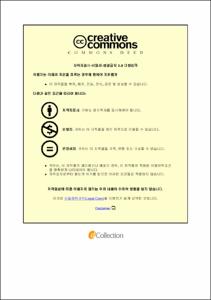유기발광다이오드용 고전도성 고분자 PEDOT:PSS 투명전극의 최적화에 관한 연구
- Alternative Title
- Optimization of highly conductive PEDOT:PSS transparent electrodes for organic light-emitting diodes
- Abstract
- The development of high performance electrodes is of great importance for efficient, low-cost organic optoelectronic devices such as organic solar cells and organic light-emitting diodes (OLEDs). The commonly used indium tin oxide (ITO) as a bottom electrode remarkably increases device costs due to limited indium supply and the inherent brittleness of the material, which hinders the applications in flexible devices.
Poly(3,4-ethylenedioxythiophene):poly(styrenesulfonate) (PEDOT:PSS), a conductive polymer, is in particular regarded as a promising electrode material due to its high transmittance and conductivity, and mechanical flexibility. It is investigated that an addition of polar organic compounds with a high boiling point or various solvent post-treatment methods greatly increases the conductivity of PEDOT:PSS films.
In this work, we demonstrate high conductivity PEDOT:PSS films with 2-ethoxyethanol (2EE) which greatly improves the conductivity of PEDOT:PSS films up to 761.7 S/cm. Additionally, a solvent post-treatment performed for the PEDOT:PSS films further enhances the conductivity of 2EE doped PEDOT:PSS films up to 940.9 S/cm. The sheet resistance of the post-treated PEDOT:PSS film greatly decreases from 162.3 ohm/sq to 116.2 ohm/sq. The optimized PEDOT:PSS shows a low transmittance of 82.3 % with a low sheet resistance of 116.2 ohm/sq, which values are sufficient for the transparent electrode in OLEDs. The optimized PEDOT:PSS films with 2EE are adopted as a bottom electrode for organic light-emitting diodes and show excellent device performance. The efficiency of the OLED with optimized PEDOT:PSS films is comparable to that of the reference OLED based on ITO electrodes. The results indicate that the optimized PEDOT:PSS films with 2EE can be a promising transparent electrode for low-cost, flexible ITO-free OLEDs.
- Issued Date
- 2017
- Awarded Date
- 2017. 2
- Type
- Dissertation
- Publisher
- 부경대학교 대학원
- Affiliation
- 부경대학교 대학원
- Department
- 대학원 융합디스플레이공학과
- Advisor
- 김용현
- Table Of Contents
- Ⅰ. 서론 1
Ⅱ. 배경이론 4
제 1절 OLED 개요 4
1-1. OLED 디스플레이 / 조명 4
1-2. OLED 구조 4
1-3. OLED의 발광 메커니즘 6
1-4. 유기 전계발광 7
1-5. 저분자와 고분자 OLED 7
제 2절 적층 구조의 OLED 9
2-1. 캐리어 주입층 10
2-2. 캐리어 수송층 10
2-3. 발광층 11
제 3절 전도성 고분자를 이용한 투명전극 13
3-1. 전도성 고분자 PEDOT:PSS 13
3-2. 2-ethoxyethanol(2ee) 15
Ⅲ. 실험 18
제 1절 박막 제작 18
1-1. Solution 제조 18
1-2. 투명전극 제작 18
제 2절 OLED device 제작 20
Ⅳ. 결과 및 고찰 22
제 1절 Zonyl의 농도 22
1-1. Zonyl과 기판의 습윤성의 상관관계 22
1-2. Zonyl의 농도에 따른 면저항과 투과도 22
제 2절 2-ethoxyethanol solvent의 도핑 25
2-1. 2-ethoxyethanol solvent의 농도 25
2-2. 2-ethoxyethanol 농도에 따른 전기전도도 26
2-3. 2-ethoxyethanol 농도에 따른 면저항과 투과도 26
2-4. PEDOT:PSS2EE 박막의 코팅 스핀속도 29
제 3절 post-treatment 공정 30
3-1. Solvent 종류에 따른 post-treatment 30
3-2. Drop post-treatment의 면저항 변화 32
3-3. Drop post-treatment에 따른 스펙트럼 변화 34
3-4. Drop post-treatment AFM 변화 37
제 4절 OLED device 39
Ⅴ. 결론 43
Ⅵ. 참고문헌 45
- Degree
- Master
- Appears in Collections:
- 대학원 > 융합디스플레이공학과
- Files in This Item:
-
-
Download
 유기발광다이오드용 고전도성 고분자 PEDOT:PSS 투명전극의 최적화에 관한 연구.pdf
기타 데이터 / 1.03 MB / Adobe PDF
유기발광다이오드용 고전도성 고분자 PEDOT:PSS 투명전극의 최적화에 관한 연구.pdf
기타 데이터 / 1.03 MB / Adobe PDF
-
Items in Repository are protected by copyright, with all rights reserved, unless otherwise indicated.